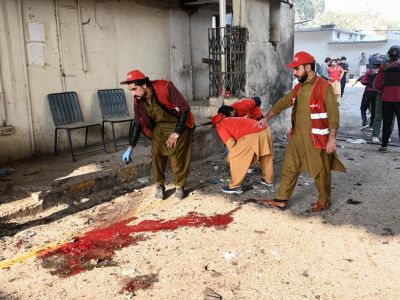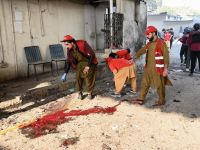An Iraqi civilian was wounded when US and British warplanes attacked a radar station in southern Iraq on Saturday, reported the official Iraqi News Agency (INA).
US and British officials confirmed the attack in Wasit province, 116 miles south of Baghdad, said the Associated Press.
A spokesperson for Britain's Ministry of Defense, however, said it was "extremely unlikely" there had been any civilian casualties.
"The US British warplanes targeted our civil and service installations ... resulting in the injury of one civilian," an Iraqi military spokesman said in a statement carried by INA.
Iraqi surface-to-air missiles and "courageous ground resistance" returned fire at the planes, forcing them to turn back "in shame," the spokesman added.
The US Central Command released a statement saying that its aircraft launched the missile attack at 4:30am EDT "in response to recent Iraqi hostile threats against coalition aircraft monitoring the southern no-fly zone."
Damage assessment was ongoing, the US statement said.
"Coalition aircraft never target civilian populations or infrastructure and go to painstaking lengths to avoid injuries to civilians and damage to civilian facilities," claimed the central command.
Since December 1998, there have been more than 1,010 incidents of Iraqi surface-to-air missile and anti-aircraft fire against coalition warplanes, according to AP estimates.
A British Ministry of Defense official told AP on condition of anonymity that it was "an extremely precise military target and there was no collateral damage. All personnel returned safely."
US and British planes started enforcing a "no-fly" zone in southern and northern Iraq following the 1991 Gulf War, ostensibly to protect Iraq's Kurdish and Shiite minorities.
In the 1980s, when Iraq was a much-favored US ally, Iraqi President Saddam Hussein reportedly killed thousands of Kurds with poison gas – Albawaba.com
© 2001 Al Bawaba (www.albawaba.com)









